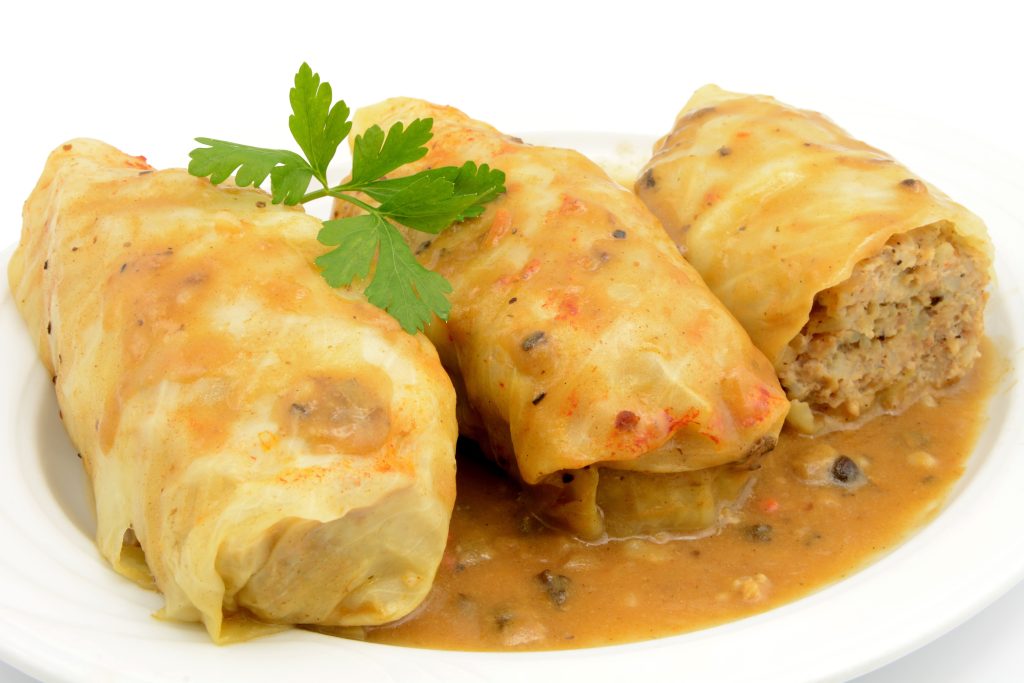Gołąbki
A favourite main dish on Polish tables. It takes quite a long time to prepare stuffed cabbage rolls, but that doesn’t discourage even people who feel insecure about being a cook. Why? Because it’s an absolutely delicious dish!
Traditional ‘gołąbki’ are a dish of minced or chopped meat mixed with rice and wrapped in cabbage leaves. The cabbage can be white or Chinese, or Italian. Prepared in this way, tightly stacked side by side, are simmered for a long time or baked in the oven.
What meat do we usually choose for ‘gołąbki’? Pork, mutton, poultry, lamb and beef go well with them. As for rice, you can replace it with millet or barley groats, as well as pearl or buckwheat groats.
The dish is usually served covered with an aromatic sauce, with boiled potatoes. Thick tomato sauce is the most typical, but stuffed cabbage rolls taste great with dill and cream sauce, as well as garlic or roast sauce.
Enjoy!
What remains to be clarified is the name, and here there is no consensus among linguists. According to the National Institute of Culture: “some researchers believe that we have borrowed the dish along with the name from East Slavic languages. The name would then be symbolic – pigeons were attributed qualities such as purity and strength, among others, so GOŁĄBKI would be a dish that adds strength […]. Other researchers are of the opinion that GOŁĄBKI as a name arose on Polish soil by referring to an elegant French dish: stuffed pigeons baked in cabbage leaves. In order to prevent the delicate meat of the pigeon from drying out during roasting, it was wrapped in cabbage leaves”.
And finally, do you know this proverb:
Pieczone gołąbki nie lecą same do gąbki (=Roast ‘gołąbki’ do not fly by themselves into a mouth)
– we say this when we want to emphasise that in order to achieve something, you have to make an effort and earn it.



